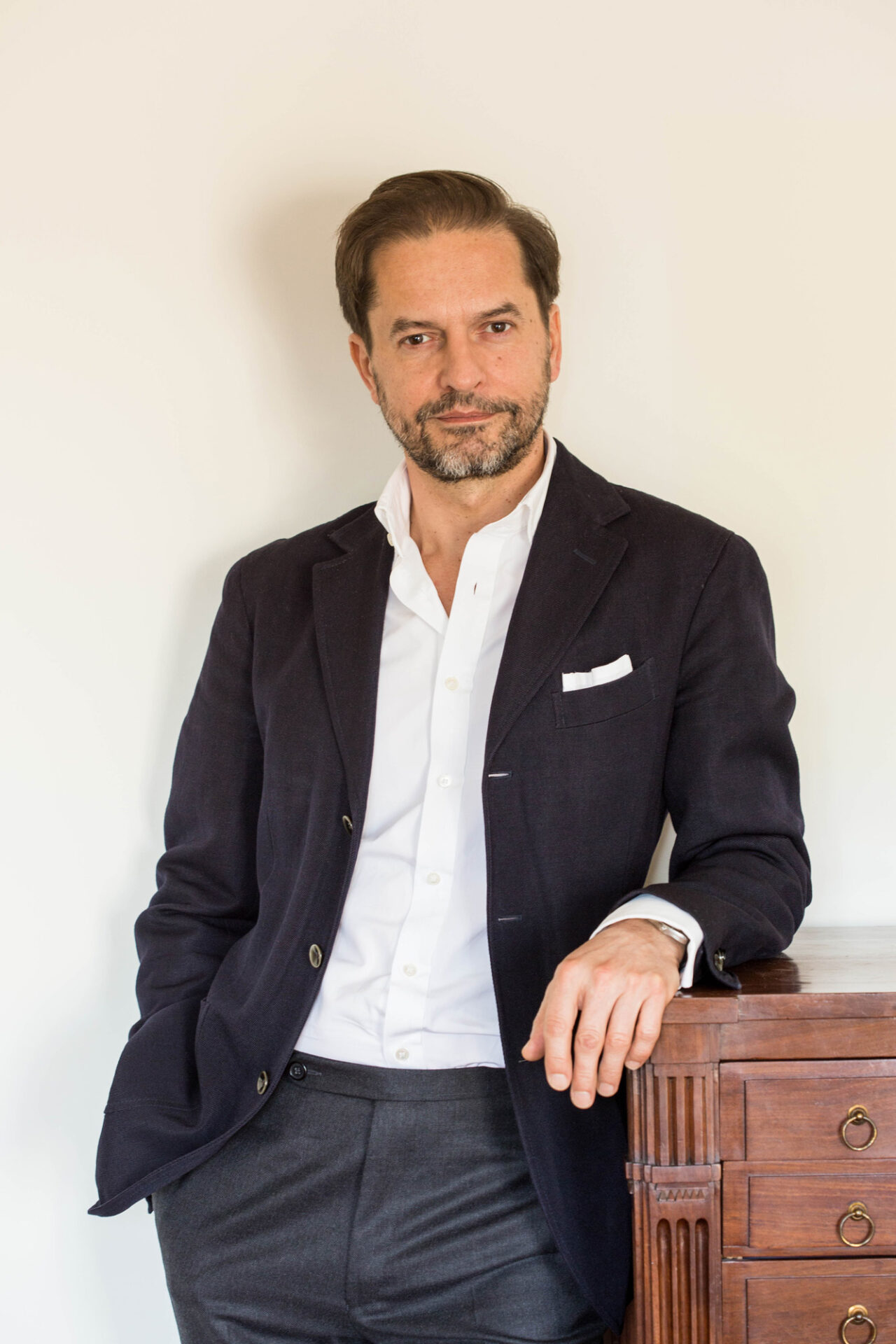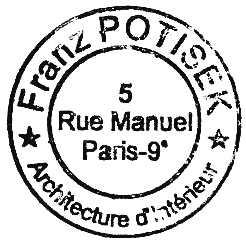
All interior designers have a house they idealise. I personally have a number of them, but the one dearest to my heart is a 19th century manor house where friends of ours lived and we used to visit them often when I was young. It was jointly owned by different members of their family, so there were aunts and uncles, cousins, sisters-in-law, etc. Different generations cohabited gleefully and they all did the necessary for it all to work. Some aunts stoked the fireplaces in the bedrooms of the guests, others baked cakes… It was the generous hospitality of Flanders, the region I was born and brought up in. This to me was the quintessential happy home. It was a friendly, reassuring world, all in a 19th century decor. I suppose it’s my Rosebud, the childhood memory that explains my love of the 19th century and my conception of comfort as consideration for the well-being of others. I was the youngest of ten siblings in my parents’ house, an ideal situation for learning how to share, empathise … and fight for a place.
I saw Versailles for the first time when I was seven. I visited every corner it was possible to visit. I was fascinated. My love of stately décor dates from this period.
When I was ten, reading a feature in « Paris-Match », I discovered the Château de Groussay, the fruit of the combined aesthetic deliriums of owner Charles de Beistegui, and interior decorator Emilio Terry. It was a shock, a life-changer, a revelation: it dawned on me that it was possible to reproduce decors just as sumptuous as those of the chateaus of yesteryear! I was stunned; I found it extraordinary that we could recreate an antique finish. Emilio Terry instantly became my hero. That was the day I decided to become an interior designer.
When I was twelve, having saved my pocket money for months on end, I took a decisive step and bought an empire-style mahogany writing desk. I started to take a serious interest in art, decorative arts and furniture. As a young man, I went to live in Paris and frequented the world of antique dealers. I observed my elders and learnt on the job. My first real break came from a perfumer who asked me to redecorate his premises and after that I went from job to job.
This was in the eighties, Paris was one big party and I wanted to be in on it. I was twenty; anything seemed possible, even becoming a rock star. Some friends and I started a cold wave band with me as singer. We were impatient youths, determined to become famous in a few months. But after three or four weeks of approaching producers, as success did not appear to be imminent, nor assured, the band split up and I returned to my true loves.
Then I met antique dealer Stéphane Deschamps, who became my mentor and introduced me to the decorative arts of the 20th century, a domain in which he was an expert. A man with an extraordinary eye, he was the king of thirties and forties furniture, and was the first to bring it back into the limelight in the sixties, light years ahead of his peers. He trained me, taught me to be more rigorous, precise, and to sharpen my choices. He was the one who opened my eyes and heart and taught me to look.
In 1993, on the strength of his teaching, I opened my first interior design firm in my apartment in the 9th arrondissement. It was difficult to begin with, but I was confident and I persevered. I started to design furniture. I worked on some small projects where I was able to apply the guiding principles I had already decided on: stay as close as possible to the original period of the places I am working on, without worrying about reconstitution or historical fidelity, and make them pleasant to live in. The idea is to recreate a period or an ambiance as I imagine them, incorporating technological progress and the lifestyle of the owners into the equation. Anticipation of needs, perfection of details and extreme quality of the materials worked by the best craftsmen, such was my philosophy. Nor was I loathe to going against the prevailing trends, using fake wood, wallpaper with extravagant patterns, Formica or Cordovan. The advantage of the outmoded is that no-one else has it and you become avant-garde… until it comes back into fashion. Rose Bertin, Marie-Antoinette’s « fashion minister », said the same thing back in the 18th century: « There is nothing new but what is forgotten ». I like the idea of bringing back up to date something that is considered outdated. I also enjoy mixing periods and styles, genuine and fake, antique and modern. I adore playing with contrasts, colours, prints, and imagining solutions to elegantly conceal the utilitarian. I sometimes feel like an illusionist, but unlike set designers for films, everything I do is also functional and is calculated to the nearest millimetre to optimise the well-being of the future occupants. I like people to be able to enter a house as if they were putting on a comfortable garment, that has been broken in. My goal is to provide them with homes that are comfortable, generous, ready to be lived in and that reflect their aspirations. Let them delight in turning up with just a toothbrush and pyjamas…
In 2000, I reconverted a small shop that became vacant near my apartment and set up my agency there, with tables, chairs and a sofa I had specially designed. I’m enjoying this designer side of my work more and more. I take great pleasure in creating objects that fit into my interiors, and which, because they are one-off or only a few copies will be made, can be technically sophisticated.
At that same period, I was contacted by a couple who had seen my work and wanted me to decorate their apartment. I was greatly impressed to learn that there were several Emilio Terry houses in their family. For people who had always lived in surroundings designed by my idol to like my work and choose me was very significant for me. I feel at ease with myself, validated. It feels as if I have come full circle.
Today I feel fulfilled. I work in France and in lots of other countries, decorating, always with the complicity of my clients, apartments, country houses, town houses, boutiques, and hotels that are a reflection of the owners. Fortunately, my happiness was not absolute and my creative vanity was stimulated by an encounter with the Bois des Moutiers in Varangeville. This extraordinary estate has been in the hands of the Mallets, a family of bankers, since 1898. It has a sea view and a Manor house decorated in Arts & Crafts style by British architect Edwin Lutyens, who was to become an urban planner in New Delhi, and sumptuous grounds designed by British landscape artist Gertrude Jekyll. Every time I go there, I seem to suffer from the Stendhal syndrome, overcome with emotion at the sight of so much beauty and harmony. I’m on a cloud for days afterwards. Everything else pales into insignificance in comparison, and seems derisory. I feel discouraged and can’t work. Then gradually my inspiration returns. Hope and the desire to equal such a marvel and one day create my own Bois des Moutiers acts like a compass and feeds the energy I put into my work. And so I continue to seek the perfect balance and to tell stories through my interior décors, with my fantasies and my choices. I allow myself free reign, especially my imagination.

